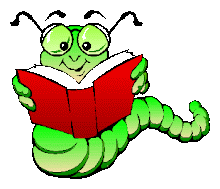After the Train by Gloria Whelan
This book elevated Gloria Whelan to one of my top 3 favorite juvenile authors.
The setting of After the Train is Germany, just post WWII. Peter, the main character, is bored in school and wondering why he has to hear about German guilt for something he had nothing to do with. However, it has more to do with Peter than he imagines. Letters that he discovers soon lead him to find out that he, in fact, is actually Jewish. It is (as it should be) haunting to learn how his mother saved him.
This book tackles the issue of how churches were complicit in Nazi Germany. At first I was nervous how the author might handle it. My first inkling that it would be handled well was when one of her characters described an organ as "the soul of a church." At this, I figured this author must have some understanding.
She does. She is honest about the fact that so many Christian churches caved in to the Nazis. She balances this fact out in two ways. Through Peter's father, we see an average German who wants to be good and see how hard that is when men like Hitler rise to power and fear grips good people. Anti-semitism was rampant and even existed after the atrocities were brought to light. Sometimes, people can be ant-semitic and do good things and think they are good. She illustrates the complexity of humanity. We are reminded by one character that we do not judge God by the actions of people.
We also are introduced to 2 heroes of the war: we learn about the Protestant hero: Dietrich Bonhoeffer, and the Catholic hero: von Stauffenberg, who failed in his plot to kill Hitler, and he and his family greatly suffered for it. (...a story I was unfamiliar with).
Peter wrestles with his (our) doubts, questions, and relationship between Christianity and Judaism. The conclusions he draws are true and respectful: as a religion, you cannot be both, but they have much in common and can peacefully coexist.
Throughout, the author develops a metaphor as the perfect background: Peter, his father, and a Jewish man rebuild a broken and shattered church building. The Jewish man is also rebuilding a synagogue, and loves both buildings. The church in rubble is an apt description of what evil can do, and the author does not hide that the people of the church both participate in destroying it, and fight back to rebuild it and themselves afterward.
My favorite description in the whole book had nothing to do with the Nazi theme. It was her description of the building of Gothic cathedrals that won me over...
"These churches are the first great monuments built by workmen who were their own masters. Just think of the pyramids--the slaves who built them carted stones under the scourge of the Egyptian lash. Thousands of workmen died to build the pyramids. In the twelfth and thriteenth centuries, when the great gothic churches were built, men built with their hearts and minds as well as their backs. It was no longer just the master who decided what must be done. No, the workmen had a say. All the skill and imagination of the workmen was added to that of the master, and look what beauty came of men working freely!"
If your tween is studying the WWII era, and you want a lasting, accurate picture for them...I recommend you read aloud and discuss first, "The Boy in the Striped Pajamas," and follow it with "After the Train."
Safety Rating: 3 Vatican Flags
Historical Fiction: 10 years after World War II


1 comments:
Along these same lines, I read a book when I was little called Searching For Shona. It was about two girls who switched places during the war when the city kids got sent out to the country (England). One was a rich girl, and one was an orphan. After the war, the rich girl lived as the poor girl for so long, she wanted to switch back lives...it's a very good book for 10+ girls. I had to search and search for a copy for my daughter. I finally found one on a used book site and it's all yellowed and smelly but I still have it!
Post a Comment